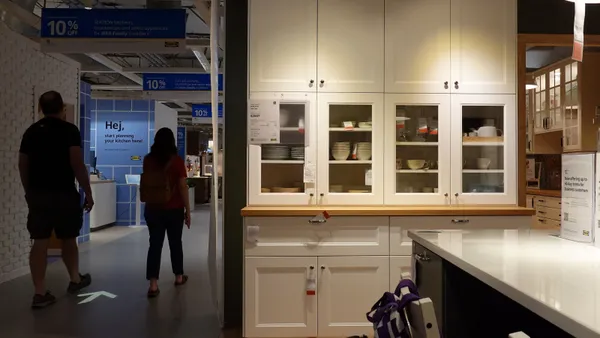CORRECTION: An earlier version of this article misidentified Diet-to-Go as a meal-kit delivery company.
Dive Brief:
- Meal delivery company Diet-to-Go last week told Supply Chain Dive it recently acquired a new meal delivery facility in Burbank, CA to help better serve West Coast clients.
- The new facility will service roughly 30,000 customers in California, Nevada and Arizona. The company also has an Arlington, VA kitchen servicing much of the East Coast.
- The company considers the task "more than last-mile," rather just-in-time production for the food industry. Each meal arrives at the customer's doorstep within three days of creation.
Dive Insight:
The meal delivery industry is booming: a recent Technomic report projects worldwide revenues from food subscriptions will grow to more than $10 billion by 2020, and was already a $1 billion market as of 2015.
The rise of e-commerce and improvements in last-mile delivery are contributing to the rapid growth, and like any other booming industry, the players within it have had to adapt quickly and scale accordingly. "For a long time it was trial and error," Diet-to-Go Executive Vice President of Customer Relations Rachel Burdo told Supply Chain Dive.
The company's Burbank kitchen is its second since Diet-to-Go opened its doors in 1991, date from which the company has consistently experimented to discern how best to handle meal delivery.
"We did a lot of research and looked at other company's methods. Initially, we only offered local pickup, but once people became comfortable with the idea of home delivery as a result of Amazon's convenience factor, everything changed and we began operating on that model."
Rather than relying on a special last-mile option, the company relegates roughly half a dozen courier services to speed their meals either directly to their clients' homes or to a local distribution center for pick up. The distribution center option saves the clients about $20 per week.
"Our trucks meet the couriers en route to the locations they cover," Burdo said. Clients in the Midwest receive their meals via FedEx. "We even tried delivery to Canada," Burdo recalled. "It was too hard with all their regulations, so we dropped it."
Home-delivery expectations have helped companies like Diet-to-Go grow, but as consumer expectations grow, so too must regulations and market dynamics. Last-mile has improved accordingly, but as the case study shows, barriers to cross-border commerce and sometimes even lacking infrastructure threaten to slow what is an ongoing revolution in the food retail landscape.













